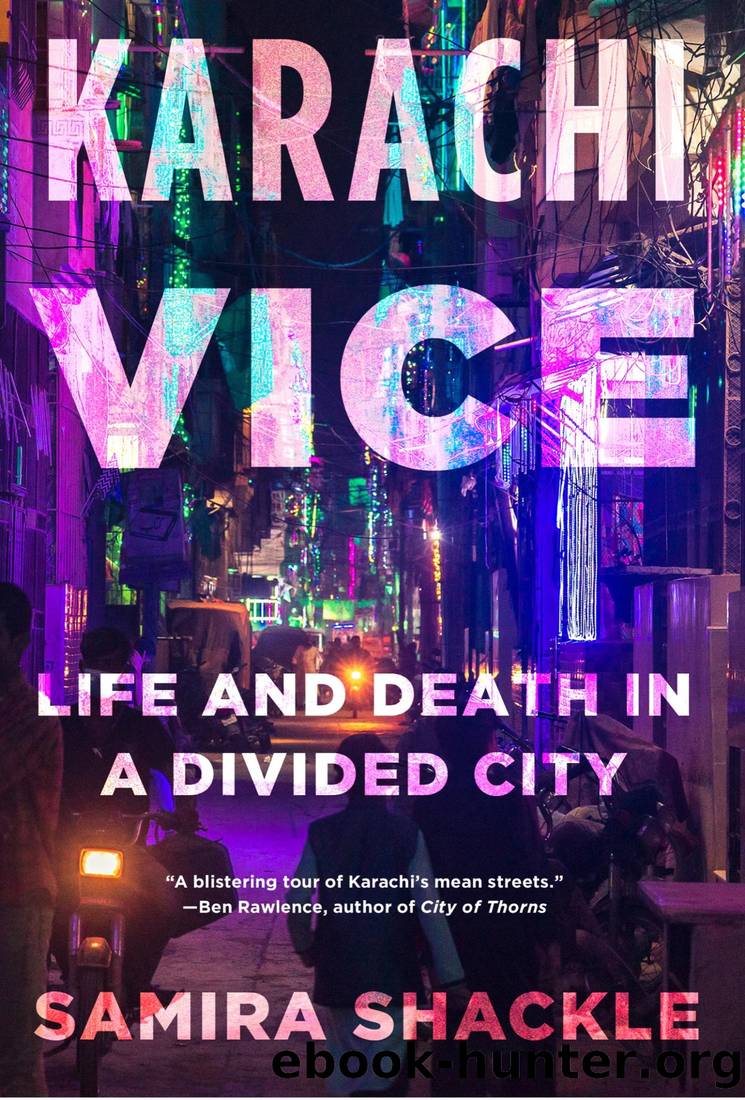Karachi Vice by Samira Shackle

Author:Samira Shackle [Shackle, Samira]
Language: eng
Format: epub
Published: 2021-09-07T00:00:00+00:00
* * *
â
Sunni extremist groups had had a foothold in Pakistan for decades. One of the most prominent, Sipah-e-Sahaba, was founded in 1985. But militancy had ramped up after the war on terror began in 2001. The US-led invasion of Afghanistan had pushed many Afghan Taliban and Al-Qaeda members out of the country. Afghan fighters and foreign militants alike fled US troops, travelling over the porous border into Pakistan to take refuge in the mountainous tribal areas, where the state had little jurisdiction. They set up new strongholds there, and a subsequent Pakistani military incursion aimed at rooting out foreign militants was mishandled. It alienated local tribesmen, some of whom sympathized with the extremists. Different radical Islamist groups established themselves in the area and, in 2007, they coalesced into a single movement: the TTP. It had close ties to Al-Qaeda, but was distinct from the Afghan Taliban. Headed by Beitullah Mehsud, a Pakistani militant, its stated aims were opposition to Pakistani military action in the tribal areas and the destruction of the Pakistani state. The movement had quickly grown in power, staging attacks around the country. But until 2009, the Taliban and other terror groups had mainly used Karachi as a fundraising base. To do this, they mimicked the MQM and the Lyari gang lords, using kidnapping, extortion and bank robberies to raise funds. This meant they were embroiled in Karachiâs street politics, clashing with the Awami National Party, which controlled the mostly Pashtun areas where the Taliban wanted to assert itself, and targeting other political parties and their workers too. But although this presence had been steadily growing, the Ashura attack was different â a major terror attack on the city itself.
On 5 February, forty days after Ashura, another Shia procession was held to mark the end of the ritual period of mourning for Imam Hussein, an important figure in Shia Islam. Once again, Shias gathered from around the city, carrying banners. Karachi was on high alert. Police and Rangers issued warnings that there could be trouble. But the worshippers were undeterred; in fact, if anything they were more determined than ever to demonstrate their faith. Despite their near miss, many of Zilleâs relatives decided to go. Safdarâs wife begged him to stay home for the day, but all the Edhi drivers were on duty, standing by in case something happened. Minibuses packed full of Shias from different parts of Karachi drove towards the procession route. The buses were mostly small, and people were packed into the seats and aisles, sometimes even clinging to the exterior.
The blast came in the afternoon, from a bomb strapped to a motorbike which detonated next to one of these buses, when it was close to Jinnah Hospital. The passengers had been families: men, women, children. At least a dozen people died immediately. The mangled bus stood in the middle of the road, the ground streaked with blood. Safdar heard the explosion and leapt into an ambulance from the depot, careering in and out of traffic to get to the scene.
Download
This site does not store any files on its server. We only index and link to content provided by other sites. Please contact the content providers to delete copyright contents if any and email us, we'll remove relevant links or contents immediately.
| Africa | Americas |
| Arctic & Antarctica | Asia |
| Australia & Oceania | Europe |
| Middle East | Russia |
| United States | World |
| Ancient Civilizations | Military |
| Historical Study & Educational Resources |
The Story of China by Michael Wood(927)
Mr. Selden's Map of China by Timothy Brook(774)
Philippines--Culture Smart! by Culture Smart!(669)
Heroic Hindu Resistance To Muslim Invaders (636 AD to 1206 AD) by Sita Ram Goel(654)
Akbar: The Great Mughal by Ira Mukhoty(650)
The Meaning of India by Raja Rao(629)
Vedic Physics: Scientific Origin of Hinduism by Raja Ram Mohan Roy(623)
Food of India by unknow(615)
Banaras by Diana L. Eck(612)
India--Culture Smart! by Becky Stephen(601)
China Unbound by Joanna Chiu(600)
First Platoon by Annie Jacobsen(598)
Mao's Great Famine: The History of China's Most Devastating Catastrophe, 1958-1962 by Frank Dikötter(594)
North of South by Shiva Naipaul(588)
Insurgency and Counterinsurgency by Jeremy Black(564)
How to Be a Modern Samurai by Antony Cummins(561)
A History of Japan by R.H.P. Mason & J.G. Caiger(561)
The Genius of China: 3,000 Years of Science, Discovery, and Invention by Robert Temple(560)
The Digital Silk Road by Jonathan E. Hillman(548)
